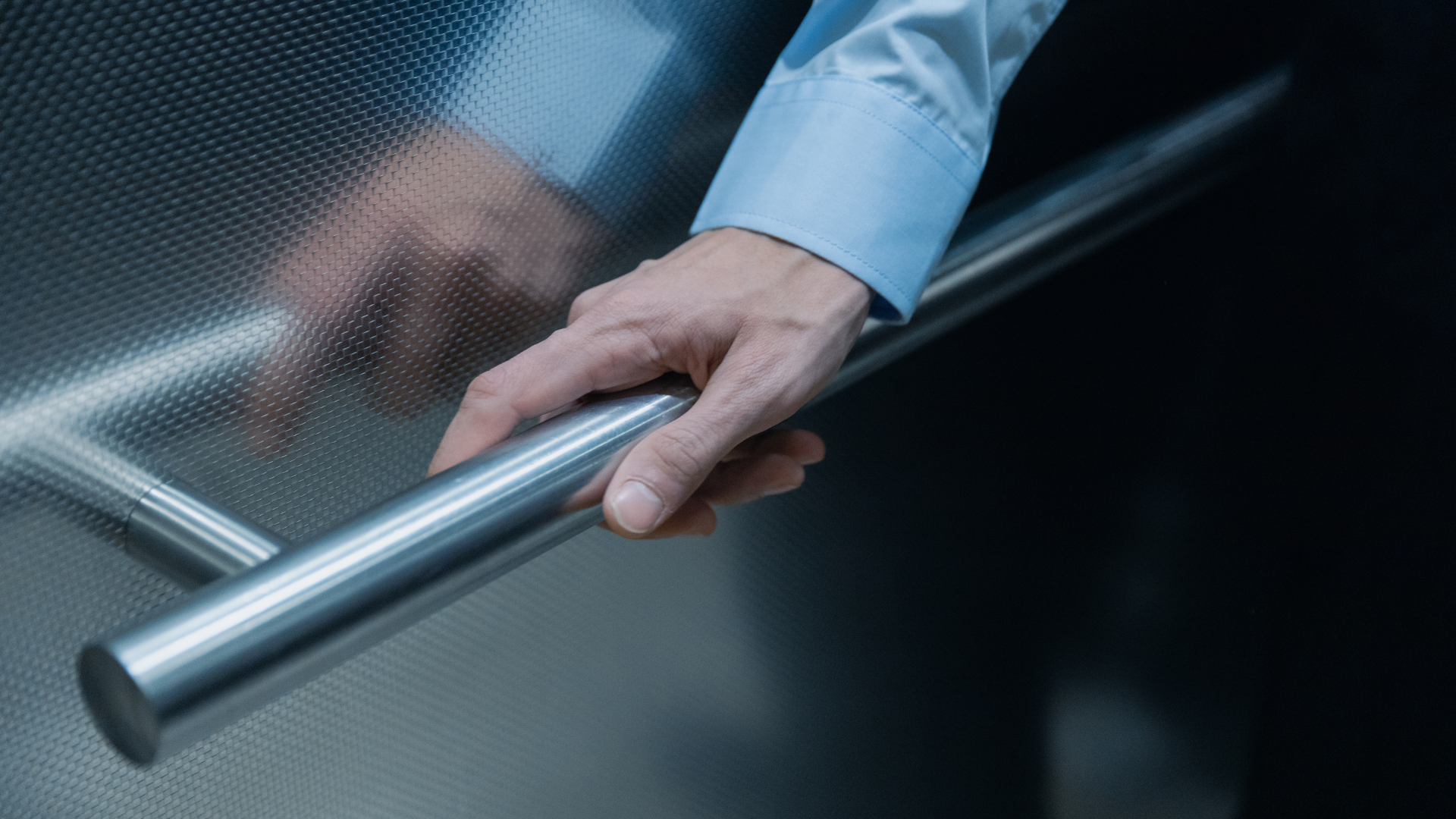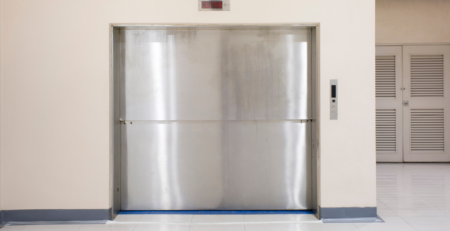Elevator Safety 101: A Comprehensive Guide
Ensuring safety in elevators is a concern for many, from daily users to commercial property managers. With over 900,000 elevators operating in the U.S., these vertical carriers are among the safest ways to move between floors.
This guide offers comprehensive elevator safety tips and protocols that address common risks and reinforce safe usage practices. Stay safe, read on!
Key Takeaways
- Over 900,000 elevators operate in the U.S., making safety measures essential for preventing accidents like trips and falls during boarding or exiting.
- Proper use of elevators involves not holding doors open, avoiding overcrowding, and knowing what actions to take in emergencies, such as using stairs instead of elevators during fires.
- Workers must be cautious by holding handrails, moving to the back of the elevator for even weight distribution, and staying informed about the elevator’s safety features to prevent common injuries.
- Elevator companies like Schindler offer advanced product safety features including energy – efficient operations and touchless technology to promote hygiene and reduce contact points.
- City Elevator prioritizes elevator safety through strict adherence to regulations, comprehensive training programs for employees on preventive measures and emergency responses. Regular maintenance and inspections ensure all equipment meets high safety standards.
Elevator Safety Tips for Riders
Mastering elevator safety measures can significantly reduce risks and ensure a safe ride for every passenger. Our guide dives deep into essential tips, empowering riders with the knowledge to avoid accidents and respond effectively in unexpected situations.
Be cautious when boarding and exiting
Ensure passengers exercise caution during elevator boarding and exiting processes. Trips and falls, the leading causes of injuries within elevators, often occur due to rushing or not paying attention to the floor level upon entering or leaving the lift.
Simple safety precautions can significantly reduce these risks, making it crucial for commercial property managers to educate occupants on proper vertical transportation practices.
Check that elevator hoistway doors open completely before stepping in or out. Since these doors will not open without being triggered by the arrival of an elevator car, passengers should wait for a clear indication that it is safe to board or exit.
This approach minimizes accidents related to opening and closing mechanisms and ensures passenger safety by preventing premature movements towards the elevator shaft.
Do not hold open elevator doors
Holding open elevator doors can lead to several risks and is a crucial point in elevator safety tips for riders. This practice can disrupt the normal operation of the elevator and might cause unnecessary delays or even malfunctions.
Elevators are designed with precise timing sequences, and interfering by holding the doors open can affect their efficiency. Additionally, this action poses a risk of injuries, especially since trips and falls are the leading causes of injuries in elevators.
Proper elevator etiquette involves allowing doors to close as intended unless an emergency button facilitates their reopening. Comprehending that elevator hoistway doors will not open without being triggered by the arrival of the elevator car underlines the importance of respecting door mechanisms for avoiding mishaps in elevators.
By educating both riders and staff about these guidelines, commercial property managers play a key role in preventing falls in elevators and ensuring overall lift safety.
Avoid overcrowding
Avoiding elevator overcrowding is crucial for passenger safety and preventing elevator accidents. Overcrowded elevators can lead to dangerous situations, including trips and falls, which are among the leading causes of elevator-related injuries.
Encourage tenants and visitors to wait for the next ride if an elevator appears full. Implementing clear signs indicating maximum capacity can help manage this issue effectively.
Ensuring elevator safety involves more than just routine maintenance; it requires cooperation from everyone who uses them. Property managers should regularly communicate with occupants about the importance of adhering to safe riding practices, such as avoiding overcrowding.
This proactive approach not only enhances safety but also contributes to the longevity of the elevators by preventing unnecessary strain on their mechanisms.
Take action in case of an emergency
If you find yourself trapped in an elevator, immediately press the emergency button to alert building management and emergency responders. This critical step ensures help is on the way, prioritizing your safety and that of other passengers.
Stay calm and communicate through the provided emergency communication methods if available, sharing important details about your situation.
In case of a fire in the building, do not use elevators as an escape route. Elevator shafts can act as channels for smoke and flames, posing serious risks. Instead, familiarize yourself with fire safety measures including locating stairwells for a safe exit.
Regularly reviewing emergency preparedness tips with tenants and conducting drills can greatly enhance everyone’s ability to respond calmly and efficiently during crises.
Elevator Safety Tips for Workers

Implementing elevator safety tips for workers ensures a safer environment, enhancing efficiency and preventing accidents in commercial properties. Explore these guidelines to foster a culture of safety and reliability within your premises.
Know your destination
Knowing your destination is crucial for elevator safety, especially for workers who perform maintenance and inspections. Accurate knowledge of the floor or area needing service ensures efficiency and reduces the risk of accidents, which are more common among technicians than regular passengers.
This practice supports preventing elevator accidents by allowing workers to prepare appropriately before entering an elevator, ensuring they have all necessary tools and safety equipment ready.
For commercial property managers, this means insisting that all elevator technicians check and double-check their work assignments before proceeding with their tasks. This step not only enhances worker safety in elevators but also contributes to avoiding unnecessary stops or trips within the shaft, further minimizing trips and falls—the leading cause of injuries among elevator workers.
It emphasizes the industry’s commitment to safety while modernizing elevator systems through meticulous planning and execution during maintenance operations.
Hold the handrail
Holding the handrail in an elevator is a simple yet crucial step for worker safety. It prevents trips and falls, the leading causes of injuries among elevator riders. Given that elevators are essential in commercial buildings, ensuring worker safety during their ride is paramount to maintaining a safe work environment.
Implementing workplace elevator safety measures like gripping the handrail can significantly reduce the risk of accidents. This practice should be part of regular safety training sessions for all employees.
Encouraging this habit aids in preventing potential injuries and contributes to creating a culture of safety within commercial properties. Elevator maintenance tips also highlight the importance of functional handrails as part of overall elevator hoistway safety protocols.
Move to the back of the elevator
After ensuring you’ve secured a firm grip on the handrail, moving to the back of the elevator is another crucial safety step. This action helps in preventing trips and falls by distributing weight more evenly across the elevator platform, which is essential given that these incidents are among the leading causes of injuries in elevators.
It also makes room for others to board safely and prevents overcrowding at the entrance, aligning with recommended safety precautions for employees using elevators.
Creating adequate space by moving to the back allows everyone inside easy access to exits in case an emergency arises. This practice not only promotes safe elevator behavior but also ensures smooth operation during busy times, especially when workers might be carrying heavy items.
Elevator accidents often occur due to haste or negligence; therefore, adopting this simple yet effective habit contributes significantly to a safer working environment within commercial properties.
Be aware of safety features
Moving to the back of the elevator increases personal safety, but being aware of an elevator’s safety features is equally vital. Workers must familiarize themselves with these features to prevent accidents effectively.
Elevators come equipped with several crucial safety protocols designed to protect users from harm. For instance, hoistway doors that only open when triggered by the elevator car arriving can significantly decrease the risk of falls—one of the leading causes of injuries in elevators.
Occupational hazards are present everywhere, and elevators are no exception. By understanding how to utilize built-in safety mechanisms and recognizing signs of potential malfunction, workers contribute not only to their well-being but also enhance workplace safety overall.
Building owners play a significant role here as well; they are responsible for ensuring that all maintenance records are up-to-date as part of their injury prevention strategy. This active engagement with accident prevention measures and adherence to safety protocols ensures a safer environment for everyone involved in operating or maintaining elevators.
Importance of Elevator Safety
Elevator safety is critical for protecting passengers and workers from unnecessary risks. It ensures that everyone can use these vertical transportation systems with confidence, minimizing accidents in commercial buildings.
Why it matters
Understanding the importance of elevator safety is crucial for commercial property managers. It not only ensures the protection of riders, including employees and visitors but also safeguards the owner’s investments by reducing risks linked to accidents and malfunctions.
Keeping elevators in top condition through regular maintenance and inspections plays a vital role in risk management. This approach not only aligns with building regulations but also optimizes operational efficiency, which can lead to savings on energy costs thanks to green technology solutions offered by companies focused on sustainability.
Furthermore, understanding and applying safety protocols during emergencies can greatly reduce potential injuries among occupants. For commercial property managers striving for excellence in occupational safety and seeking to maintain high levels of tenant satisfaction, investing in up-to-date elevator systems equipped with modern product safety features is imperative.
Strict codes and standards
Strict codes and standards form the backbone of elevator safety, ensuring that every lift operating within a building adheres to rigorous safety measures. Government agencies and industry leaders work tirelessly to uphold these standards, requiring comprehensive elevator maintenance, systematic inspections, and detailed documentation from building owners.
This collective commitment guarantees the integrity of elevators used by millions daily.
Modernization projects and infrastructure upgrades further solidify the importance of these codes. They are not just about compliance but also about embracing advancements that enhance safety features in both new installations and existing systems.
Through regular regulatory compliance checks and an unwavering dedication to development projects, commercial property managers play a crucial role in maintaining a safe environment for all elevator users.
Product safety features
Elevator safety features stand at the forefront of modern elevator technology, ensuring that both riders and workers enjoy a secure environment. Schindler leads this charge with its wide array of options tailored to various building needs, including energy-saving elevators that not only enhance reliability but also significantly cut down on energy consumption.
These advancements, coupled with the rigorous adherence to building regulations, set a new standard in elevator safety.
Moreover, Schindler’s CleanMobility solutions are revolutionizing how we approach clean and safe elevator use. With touchless products designed to promote hygiene and reduce contact points, these innovations are integral for commercial property managers seeking to modernize their buildings.
The commitment to promoting clean mobility in elevators underscores the importance of continually integrating cutting-edge safety features into every aspect of elevator design and operation.
Next, let’s explore how City Elevator prioritizes these elements within their operations.
How City Elevator Prioritizes Elevator Safety
City Elevator demonstrates its unwavering dedication to elevator safety by rigorously adhering to industry-leading protocols and ensuring all equipment meets the highest standards, inviting readers to explore how this commitment shapes safer vertical transportation environments.
Commitment to safety
City Elevator demonstrates a steadfast commitment to safety by strictly adhering to rigorous safety protocols and performing regular elevator maintenance. This approach ensures that every passenger experiences secure and reliable elevator service, effectively preventing falls—the leading cause of injuries in elevators.
By meticulously documenting all maintenance activities, City Elevator guarantees compliance with established building safety standards, embodying their dedication to injury prevention and the well-being of both riders and workers.
Their preventative maintenance schedule is designed to identify potential issues before they escalate into bigger problems, safeguarding against unexpected malfunctions that could compromise passenger safety.
Furthermore, City Elevator conducts thorough elevator inspections regularly, staying ahead of any wear and tear that could affect functionality. These practices ensure hoistway doors only open when triggered by the elevator car’s arrival as per design specifications, eliminating risks associated with unauthorized door openings or unexpected falls.
Through these measures, City Elevator upholds its promise of delivering unparalleled safety in every aspect of its operations.
Compliance with regulations
City Elevator of Michigan takes pride in its unwavering commitment to regulatory compliance, positioning itself as a leader in elevator safety standards. The company’s team consists of experts deeply familiar with both local and national regulations surrounding elevator operations.
This expertise ensures that every elevator is not just safe for users but also operates within the full scope of the law, safeguarding against potential legal issues and enhancing equipment longevity.
Staying ahead of ongoing regulation updates is key to City Elevator’s success in maintaining client trust. The company vigilantly monitors changes in regulations to guarantee continuous compliance.
This proactive approach not only assures the safety maintenance of their elevators but also strengthens their reputation among commercial property managers as a reliable partner committed to total safety and regulatory adherence.
Compliance with regulations isn’t just a requirement; it’s at the core of ensuring long-term client satisfaction and trust.
Training programs
Transitioning from the essential compliance with safety regulations, we delve into the core of City Elevator of Michigan’s commitment to elevator safety: our training programs. These initiatives are designed not just to meet, but exceed industry standards for safety and efficiency in elevator operations.
- Comprehensive Safety Training: At City Elevator, all employees undergo rigorous safety training that encompasses both theoretical understanding and practical application. This ensures they are well-versed in identifying potential hazards and taking preventive measures.
- Emergency Response Exercises: Workers participate in simulated emergency scenarios, ranging from elevator malfunctions to power outages. These drills prepare them to remain calm and respond effectively in real-life emergencies.
- Regular Refresher Courses: To keep up-to-date with the latest safety protocols and technology, our team attends regular refresher courses. This continuous education helps maintain high levels of safety and service quality.
- Technical Skills Development: Beyond safety practices, our training programs include sessions on enhancing technical skills necessary for reliable elevator maintenance and repair services.
- Customer Service Excellence: Training also covers customer service excellence because effective communication is key during elevator emergencies or maintenance requests.
- Health and Safety Regulations Updates: We ensure that all employees stay informed about changes in health and safety regulations relevant to elevator services. This knowledge is critical for compliance and maintaining a safe operating environment.
- Mentorship Programs: Experienced technicians mentor newer employees through hands-on learning experiences on-site. This approach fosters a culture of learning and adherence to best practices in elevator operations.
Regular maintenance and inspections
Following comprehensive training programs, regular maintenance and inspections stand as pivotal practices in ensuring elevator safety. City Elevator demonstrates its commitment to safety through meticulous attention to these procedures.
- Conduct Safety Inspections: City Elevator rigorously inspects all components of an elevator system. These checks assess the condition of cables, controls, doors, and signaling devices to ensure they meet safety standards.
- Perform Regular Maintenance: Preventative maintenance is crucial for avoiding unexpected breakdowns. This includes lubricating moving parts, testing emergency systems, and updating older equipment.
- Document Every Service: For every maintenance or repair service completed, City Elevator records the details. This documentation is essential for meeting regulatory requirements and proving compliance with safety standards.
- Carry Out Minor Repairs Promptly: Addressing minor issues before they escalate into major problems can save lives and resources. City Elevator prioritizes quick responses to repair requests.
- Administer Safety Tests: Comprehensive safety tests are conducted periodically to evaluate an elevator’s operational safety under simulated conditions. This helps identify potential hazards that aren’t obvious during regular use.
- Compliance with Regulations: Staying up-to-date with local, state, and national codes is vital for legal compliance and passenger safety. City Elevator ensures that all its services adhere strictly to these regulations.
- Utilize Nonproprietary Equipment: Specializing in non-proprietary elevator equipment allows for flexibility in repairs and upgrades, offering customers more options for maintaining their elevators efficiently.
- Educate Property Managers: Beyond servicing elevators, City Elevator educates commercial property managers on recognizing the signs of wear and tear and understanding the importance of scheduled maintenance.
- Ensure Building Maintenance Coordination: Effective elevator maintenance goes hand in hand with overall building upkeep — from ensuring power supply stability to maintaining machine room environments at optimal conditions.
- Regular Updating of Emergency Protocols: Keeping emergency response plans current is essential not just for compliance but also for ensuring the safety of riders in any situation that might arise during elevator operation.
Understanding elevator safety is crucial for ensuring the well-being of millions. Simple steps like being cautious when entering or leaving an elevator can prevent accidents. Regular maintenance and knowing how to react in emergencies enhance safety significantly.
Resources such as training programs offer valuable knowledge for both riders and technicians. Let this guide inspire us to prioritize safety in our daily routines, making elevators safer for everyone. Contact City Elevator for all your elevator needs today!
FAQs
1. How can I stay safe when using an elevator?
Always check the elevator certificate for its last inspection date before you use it.
2. What should I do if the elevator stops working while I’m inside?
Press the emergency button to alert building maintenance or security, and wait calmly for help.
3. Can too many people in an elevator cause a problem?
Yes, exceeding the weight limit of an elevator can lead to malfunctions, so pay attention to capacity signs.
4. Is it safe to jump in an elevator?
No, jumping in an elevator can trigger safety mechanisms that stop it from moving, possibly leading to being stuck.
5. What are some signs that an elevator might not be safe?
Look out for strange noises, jerky movements, or doors that don’t close properly as indications of potential issues.

Sam Bruno is the driving force behind City Elevator, elevating the standards for elevator installation, maintenance, and modernization services. With an extensive background in mechanical engineering and a deep understanding of elevator systems, Sam has positioned City Elevator as a trusted provider of innovative and safe vertical transportation solutions. His commitment to excellence and safety ensures that every project delivers not only on functionality but also on reliability and design, enhancing the user experience for buildings of all types.






